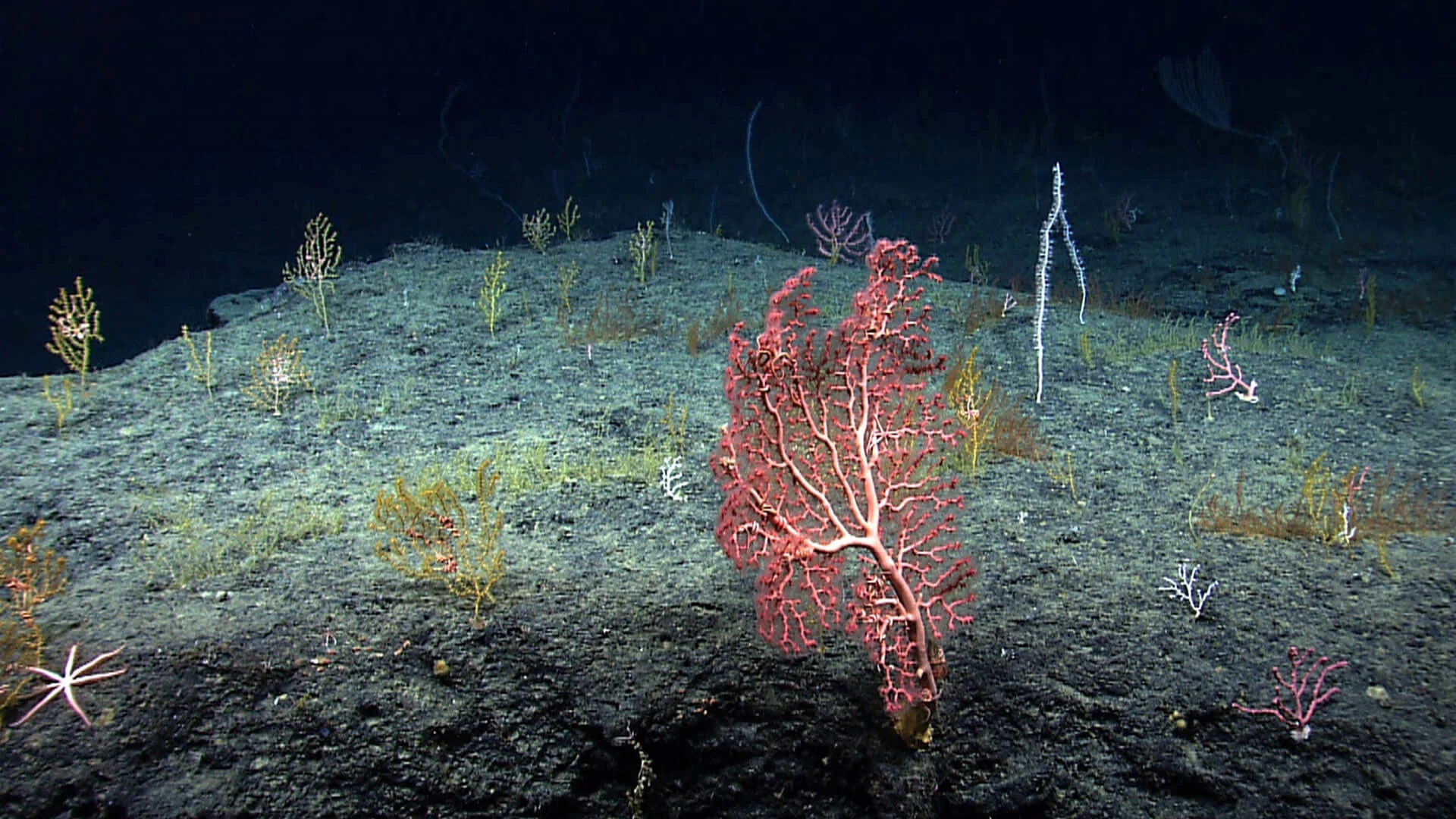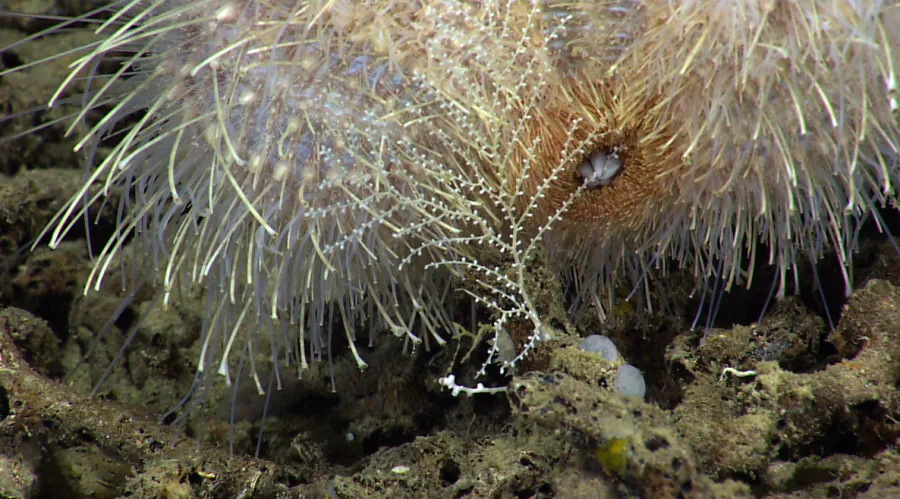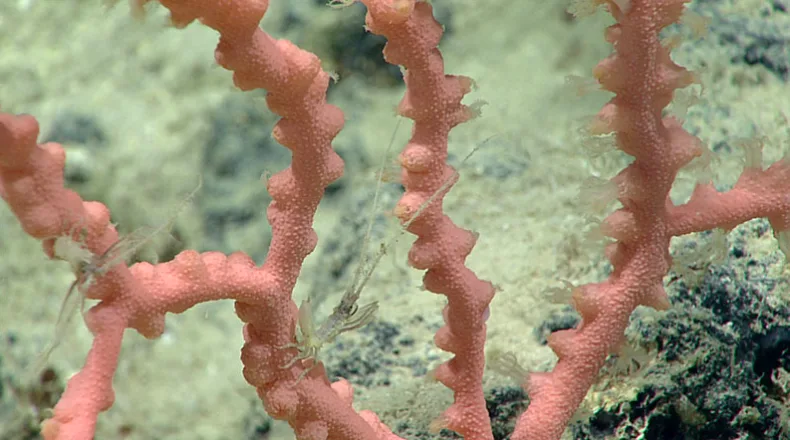
We know very little about our impact on one of Earth's largest ecosystems
Study highlights need to protect deep sea reefs, warning that the rapidly changing climate could have serious impacts on these important marine environments.
Researchers from the University of Oxford have published a study that calls for the urgent need to protect deep sea reefs, one of the largest and least-protected ecosystems on the planet.
The study comes at a time when world leaders are meeting in Montreal for COP15 to develop a collaborative approach that will protect and conserve global biodiversity.
Unlike the corals found in shallow waters near coastlines, deep reef habitats are located anywhere from 30 to several hundred metres below sea level where there can be little to no sunlight. Deep reefs provide essential ecosystem services that improve climate resiliency, maintain biodiversity, and promote sustainable fisheries that millions of people rely upon.

A rare instance of deep-sea predation captured on camera, a sea urchin munches on a Plumarella octocoral. This may be the first time sea urchin predation on coral was captured so close-up, thanks to the incredible image capabilities of the Deep Discoverer ROV. (NOAA Office of Ocean Exploration and Research)
The Western Indian Ocean covers 8.1 per cent of the global oceans and is one of the most threatened marine regions because of impacts from human activity. Approximately 220 million people live in the Western Indian Ocean region and rely on the health of deep reef habitats, which can take thousands of years to grow.
Although 4.3 per cent of the Western Indian Ocean is designated as a marine protected area, overfishing, pollution, climate change, and the potential for seabed mining are all putting deep sea reefs at risk.
Only 5 per cent of the ocean has been explored, which means that there are vast knowledge gaps in terms of how climate change and human activity are impacting the depths of the sea. The ocean absorbs about 31 per cent of all carbon dioxide emissions, but changes such as ocean acidification and rising water temperatures could impact how this critical carbon sink functions.

Isopods, likely of the family Arcturidae, were observed on the bubblegum coral at a depth of about 1,950 meters. (NOAA Office of Ocean Exploration and Research)
“We strongly encourage deep reefs to be included in conservation and sustainable management action to complement global targets, notably 30 per cent protection of the global ocean by 2030,” Paris Stefanoudis, the study’s lead author, said in a press release.
The study features a framework for deep reef conservation developed by interviewing dozens of marine professionals and includes policy recommendations and other actions that can be taken by all stakeholders.
Their deep reef recommendations for COP15 include: protect at least 30 per cent of ecosystems, including deep reefs, by 2030; implement more conservation measures; include deep reefs in the management of shallow reefs; invest in more research; and promote more international collaboration across a variety of stakeholders.
“Given the large knowledge gaps that still exist, as well as the high costs of surveying deep reefs, no single stakeholder will be able to undertake this alone. Hence, cross-stakeholder collaborations and co-production of the actions recommended in this study is crucial to effectively navigate the research, financial and legal landscape linked with deep-reef conservation,” the study concludes.
Watch below: Mountains of sugar have been discovered in the ocean
Coral reef systems have proven to be resilient, particularly when conservation efforts are applied.
Kiribati, a small island nation in the Pacific Ocean that could one day be submerged by rising sea levels, had implemented conservation measures to protect coral reefs from human activity. However, historically warm ocean waters occurred between 2015-2016 and killed up to half of the reefs that were being monitored by scientists involved in a National Geographic expedition.
Although the widespread decay indicated that recovery was unlikely, a site survey in 2021 revealed that the reef system had restored itself and was once again colourful and teeming with wildlife. This lead the research team to conclude that coral reef systems are exceptionally resilient and the Kiribati government’s decision to conserve the habitat paid off.
In an interview with NPR, Enric Sala, a marine scientist involved in the expedition, explained that marine animals in highly protected areas can grow to large population sizes and expand into other areas, which regenerates the habitat and increases the amount of carbon it can capture.
The National Marine Sanctuary of American Samoa is another location that is home to deep reef corals that is closely being monitored by scientists.
NOAA recently released a report on the condition of the sanctuary, which consists of six separate protected areas near the shores of American Samoa, based on data that was collected from 2007-2020. The report found that rising sea levels and warming waters are placing stress on the marine ecosystem and are causing coral bleaching and coral diseases.

A healthy patch of staghorn coral in American Samoa was documented in 2014 (left), underwent coral bleaching (middle), and eventually the corals were unable to recover and died (right). (XL Catlin Seaview Survey/ NOAA)
Although the majority of the coral communities in the sanctuary have recovered from severe bleaching events that occurred in 2015, 2017, and 2020, experts predict that their resiliency will become challenged in the coming years.
“In the past, the reefs here experienced mass coral bleaching maybe once a decade. With warming ocean temperatures, there have been three events in the past seven years. It takes time for reefs to recover. If this pattern continues, our reefs may not be able to keep up,” Val Brown, research coordinator at the sanctuary, said in a NOAA press release.
Thumbnail image: The deepwater environment of the Florida Escarpment proved to be a good habitat for diverse deepwater coral communities. In this image alone, there are four different species of corals, including bubblegum and bamboo corals. (NOAA Office of Ocean Exploration and Research)







